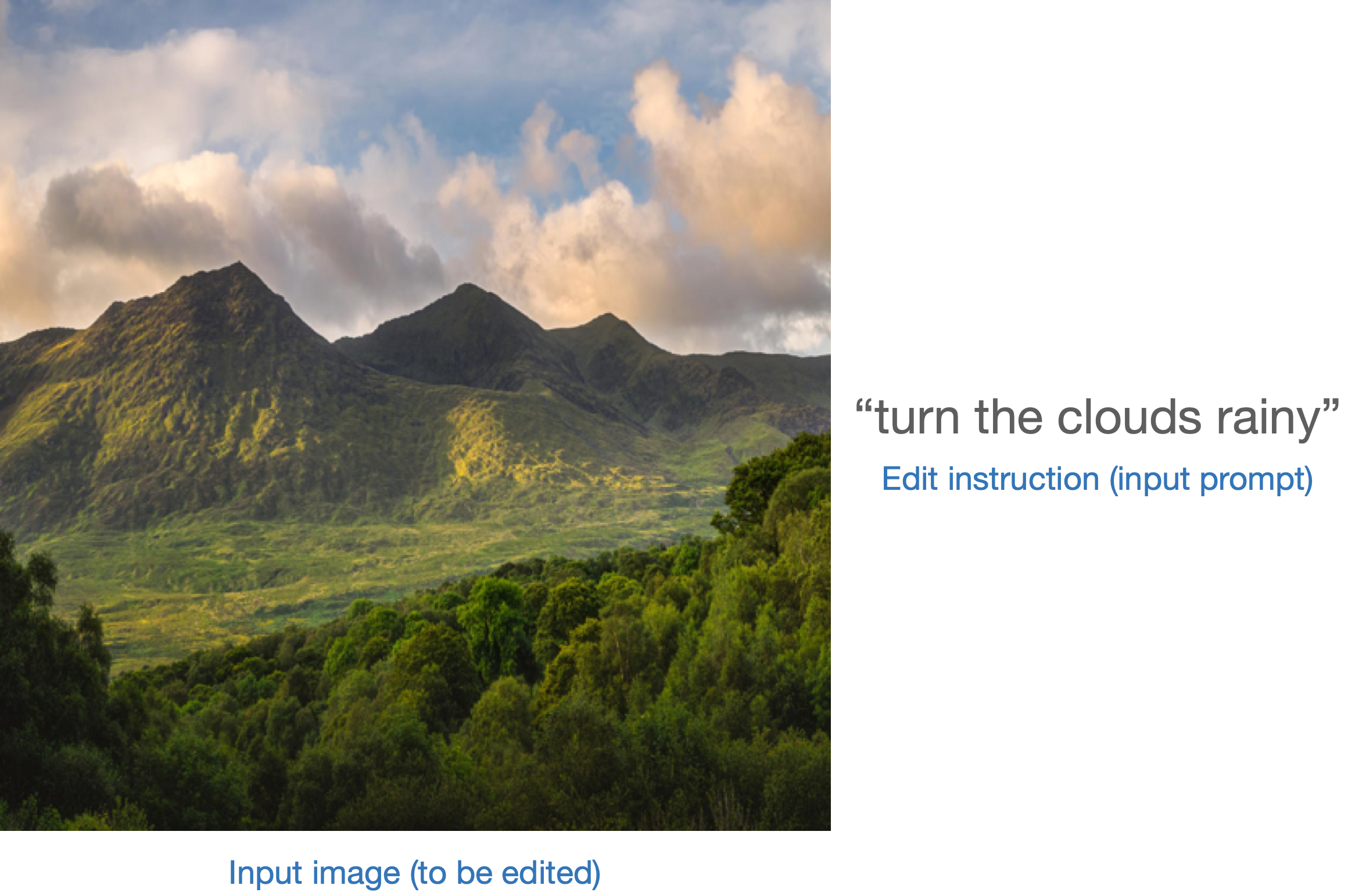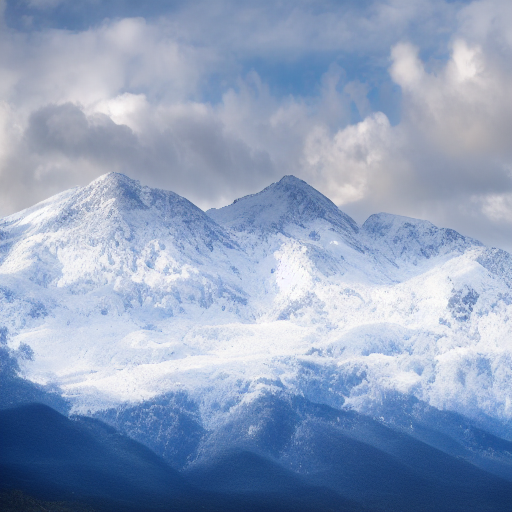* add: initial implementation of the pix2pix instruct training script. * shorten cli arg. * fix: main process check. * fix: dataset column names. * simplify tokenization. * proper placement of null conditions. * apply styling. * remove debugging message for conditioning do. * complete license. * add: requirements.tzt * wandb column name order. * fix: augmentation. * change: dataset_id. * fix: convert_to_np() call. * fix: reshaping. * fix: final ema copy. * Apply suggestions from code review Co-authored-by: Patrick von Platen <patrick.v.platen@gmail.com> * address PR comments. * add: readme details. * config fix. * downgrade version. * reduce image width in the readme. * note on hyperparameters during generation. * add: output images. * update readme. * minor edits to readme. * debugging statement. * explicitly placement of the pipeline. * bump minimum diffusers version. * fix: device attribute error. * weight dtype. * debugging. * add dtype inform. * add seoarate te and vae. * add: explicit casting/ * remove casting. * up. * up 2. * up 3. * autocast. * disable mixed-precision in the final inference. * debugging information. * autocasting. * add: instructpix2pix training section to the docs. * Empty-Commit --------- Co-authored-by: Patrick von Platen <patrick.v.platen@gmail.com> |
||
|---|---|---|
| .. | ||
| README.md | ||
| requirements.txt | ||
| train_instruct_pix2pix.py | ||
README.md
InstructPix2Pix training example
InstructPix2Pix is a method to fine-tune text-conditioned diffusion models such that they can follow an edit instruction for an input image. Models fine-tuned using this method take the following as inputs:

The output is an "edited" image that reflects the edit instruction applied on the input image:

The train_instruct_pix2pix.py script shows how to implement the training procedure and adapt it for Stable Diffusion.
Disclaimer: Even though train_instruct_pix2pix.py implements the InstructPix2Pix
training procedure while being faithful to the original implementation we have only tested it on a small-scale dataset. This can impact the end results. For better results, we recommend longer training runs with a larger dataset. Here you can find a large dataset for InstructPix2Pix training.
Running locally with PyTorch
Installing the dependencies
Before running the scripts, make sure to install the library's training dependencies:
Important
To make sure you can successfully run the latest versions of the example scripts, we highly recommend installing from source and keeping the install up to date as we update the example scripts frequently and install some example-specific requirements. To do this, execute the following steps in a new virtual environment:
git clone https://github.com/huggingface/diffusers
cd diffusers
pip install -e .
Then cd in the example folder and run
pip install -r requirements.txt
And initialize an 🤗Accelerate environment with:
accelerate config
Or for a default accelerate configuration without answering questions about your environment
accelerate config default
Or if your environment doesn't support an interactive shell e.g. a notebook
from accelerate.utils import write_basic_config
write_basic_config()
Toy example
As mentioned before, we'll use a small toy dataset for training. The dataset is a smaller version of the original dataset used in the InstructPix2Pix paper.
Configure environment variables such as the dataset identifier and the Stable Diffusion checkpoint:
export MODEL_NAME="runwayml/stable-diffusion-v1-5"
export DATASET_ID="fusing/instructpix2pix-1000-samples"
Now, we can launch training:
accelerate launch --mixed_precision="fp16" train_instruct_pix2pix.py \
--pretrained_model_name_or_path=$MODEL_NAME \
--dataset_name=$DATASET_ID \
--enable_xformers_memory_efficient_attention \
--resolution=256 --random_flip \
--train_batch_size=4 --gradient_accumulation_steps=4 --gradient_checkpointing \
--max_train_steps=15000 \
--checkpointing_steps=5000 --checkpoints_total_limit=1 \
--learning_rate=5e-05 --max_grad_norm=1 --lr_warmup_steps=0 \
--conditioning_dropout_prob=0.05 \
--mixed_precision=fp16 \
--seed=42
Additionally, we support performing validation inference to monitor training progress
with Weights and Biases. You can enable this feature with report_to="wandb":
accelerate launch --mixed_precision="fp16" train_instruct_pix2pix.py \
--pretrained_model_name_or_path=$MODEL_NAME \
--dataset_name=$DATASET_ID \
--enable_xformers_memory_efficient_attention \
--resolution=256 --random_flip \
--train_batch_size=4 --gradient_accumulation_steps=4 --gradient_checkpointing \
--max_train_steps=15000 \
--checkpointing_steps=5000 --checkpoints_total_limit=1 \
--learning_rate=5e-05 --max_grad_norm=1 --lr_warmup_steps=0 \
--conditioning_dropout_prob=0.05 \
--mixed_precision=fp16 \
--val_image_url="https://hf.co/datasets/diffusers/diffusers-images-docs/resolve/main/mountain.png" \
--validation_prompt="make the mountains snowy" \
--seed=42 \
--report_to=wandb
We recommend this type of validation as it can be useful for model debugging. Note that you need wandb installed to use this. You can install wandb by running pip install wandb.
Here, you can find an example training run that includes some validation samples and the training hyperparameters.
Note: In the original paper, the authors observed that even when the model is trained with an image resolution of 256x256, it generalizes well to bigger resolutions such as 512x512. This is likely because of the larger dataset they used during training.
Inference
Once training is complete, we can perform inference:
import PIL
import requests
import torch
from diffusers import StableDiffusionInstructPix2PixPipeline
model_id = "your_model_id" # <- replace this
pipe = StableDiffusionInstructPix2PixPipeline.from_pretrained(model_id, torch_dtype=torch.float16).to("cuda")
generator = torch.Generator("cuda").manual_seed(0)
url = "https://huggingface.co/datasets/sayakpaul/sample-datasets/resolve/main/test_pix2pix_4.png"
def download_image(url):
image = PIL.Image.open(requests.get(url, stream=True).raw)
image = PIL.ImageOps.exif_transpose(image)
image = image.convert("RGB")
return image
image = download_image(url)
prompt = "wipe out the lake"
num_inference_steps = 20
image_guidance_scale = 1.5
guidance_scale = 10
edited_image = pipe(prompt,
image=image,
num_inference_steps=num_inference_steps,
image_guidance_scale=image_guidance_scale,
guidance_scale=guidance_scale,
generator=generator,
).images[0]
edited_image.save("edited_image.png")
An example model repo obtained using this training script can be found here - sayakpaul/instruct-pix2pix.
We encourage you to play with the following three parameters to control speed and quality during performance:
num_inference_stepsimage_guidance_scaleguidance_scale
Particularly, image_guidance_scale and guidance_scale can have a profound impact
on the generated ("edited") image (see here for an example).